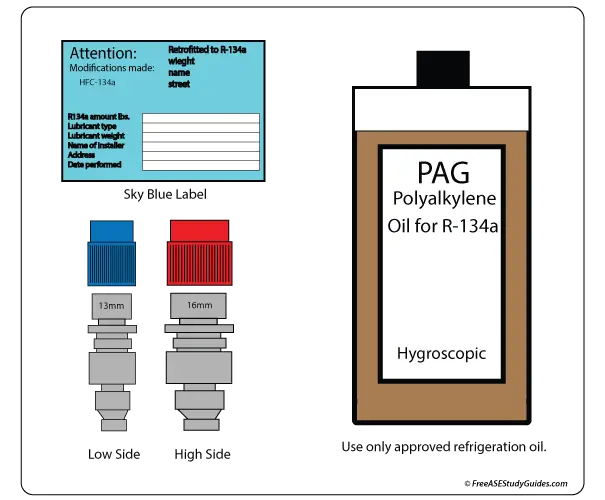Retrofit R12 to R134a

R-134a refrigerant operates at higher pressures than R-12, so older systems may require replacement components such as A/C hoses, O-rings, and possibly a compressor to retrofit R12 to R134a. All A/C system refrigerants require unique service fittings. R-134a systems have a blue-capped metric 13mm quick disconnect service port attached to the low side of the system and a red-capped 16mm quick disconnect service port on the high side. An R-12 system typically has a black-capped standard 7/16 inch threaded low side and a standard 3/8 inch high side.

Whenever a system has been retrofitted to R-134a, a sky blue SNAP-approved label must be filled out and adhered to the vehicle. This is because each refrigerant has its color code. HFC-134a is sky blue, and CFC-12 is white. R-134a refrigerant operates at higher pressures than R-12 refrigerant, so recharge the system with R-134a to only 80% to 90% of its original charge. Check with the manufacturer's specifications before performing this procedure.

Recover all R-12 from the system into a specific tank dedicated to R-12. This is because R-134a cannot be mixed with R-12. The EPA does not allow the mixing of refrigerants and considers the mixture contaminated.
Mineral oil used in R-12 systems is not compatible with R-134a either. R-134a systems require PAG (polyalkylene glycol) oil of a certain grade. PAG oil is hygroscopic, meaning it readily absorbs moisture. Never leave the cap loose when storing PAG refrigerant oil. Some manufacturers recommend using less hygroscopic POE (Polyol Ester) oil instead of PAG after a retrofit.